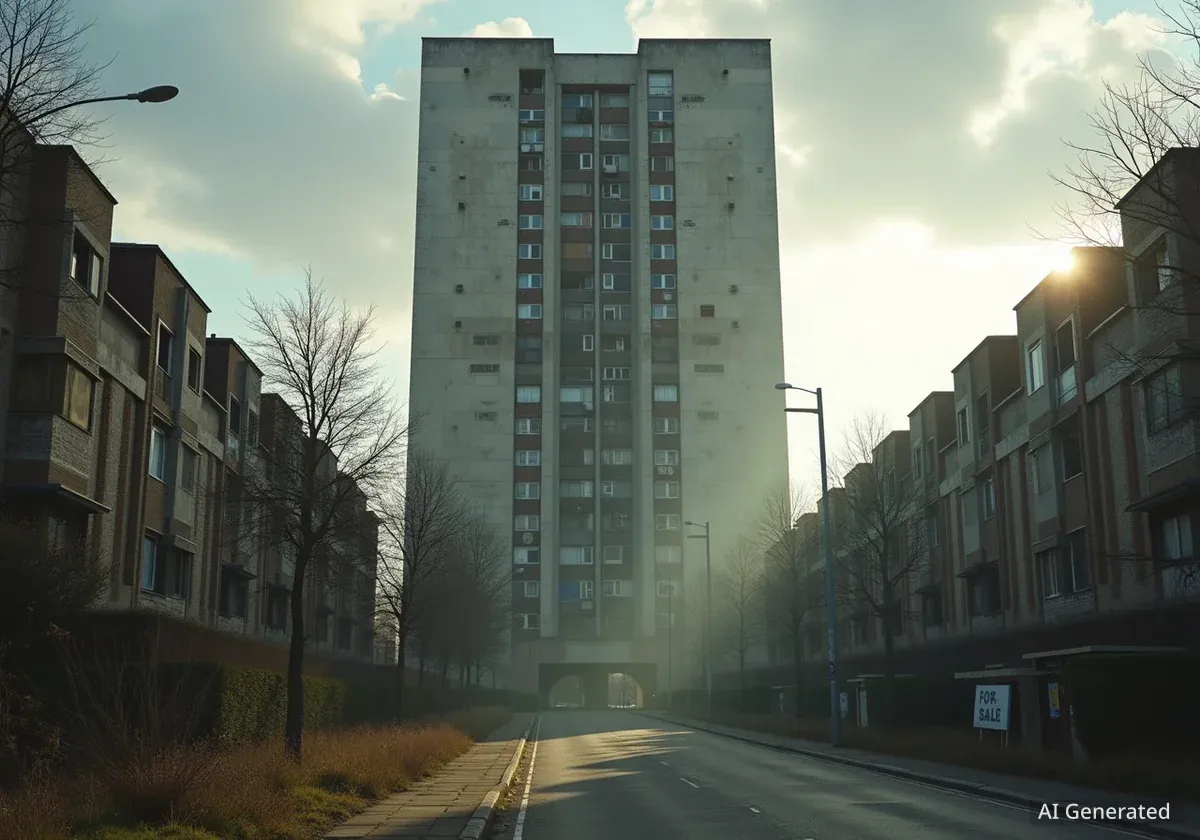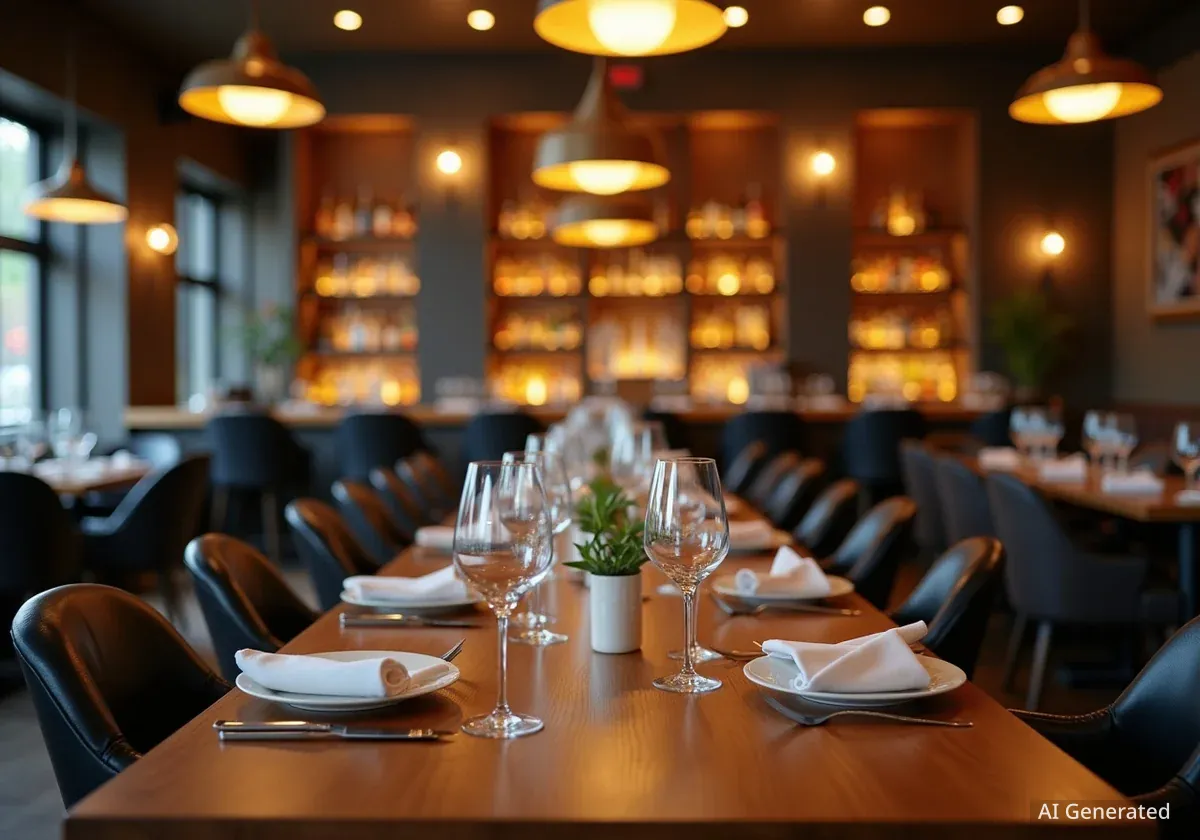A derelict tower block in Seaforth that has stood empty for more than two decades and caused significant problems for the local community is set to be transformed. Sefton Council has confirmed its intention to sell Vine House to a private developer, who plans to refurbish the building into 58 new apartments for private rent.
The 14-storey building on Kepler Street, which has been vacant since 2003, has been a source of concern for residents due to its dilapidated condition and issues with vermin. The new plan marks a shift from a previous proposal that considered demolition.
Key Takeaways
- Vine House in Seaforth has been empty and derelict since 2003.
- Sefton Council plans to sell the building to a private developer for refurbishment.
- The project will create 58 new apartments for the private rental market.
- The sale is conditional, with ownership transferring only after the refurbishment is completed to a satisfactory standard.
- The plan aims to address local housing needs and remove a long-standing community blight.
Two Decades of Neglect
Vine House, a product of the 1960s high-rise construction boom, has cast a long shadow over the Seaforth community for years. Located just metres from residential homes and the Our Lady Star Of The Sea RC Primary School, its decline has been a visible and persistent issue.
After being vacated in 2003, the building fell into a state of severe disrepair. The sight of its corrugated façade and broken windows became a daily reality for neighbours on Kepler Street. The structure's condition raised serious environmental health concerns within the community.
Resident Concerns Over Vermin
The empty tower block became a haven for pests, leading to significant distress for those living nearby. The problem became so pronounced that it was a major topic of complaint among local residents who felt the derelict building was negatively impacting their quality of life.
In February, one long-term resident, Mr. Monaghan, described the extent of the issue after living in the area for two decades. He highlighted the building's role in attracting pests.
“There’s all types of feral things running in and out of that block because it’s nice and warm and cosy for them and they’ve set up home. There’s families of rats walking arm in arm around here.”
Vine House: A Timeline of Decline
- 1960s: Constructed as part of the post-war high-rise housing boom.
- 2003: The building was officially vacated and has remained empty since.
- 2025 (February): A council report included a £1.5 million proposal for potential demolition.
- 2025 (October): A new plan for refurbishment and sale is set to be approved.
A New Direction from Sefton Council
Sefton Council's approach to Vine House has evolved over time. Earlier this year, discussions centered on the building's removal. A financial report presented to the cabinet on February 13 detailed the council's Capital Programme for 2025/26 – 2027/28, which included a provision of £1.5 million specifically for demolition works at the site.
However, recent developments indicate a strategic shift towards regeneration rather than demolition. A report for the council's Regeneration and Skills meeting on September 16 reviewed the local authority's “Community Assets Policy,” which governs how council-owned properties can be transferred or sold.
From Demolition to Development
The initial £1.5 million allocation for demolition suggested the council saw removal as the most likely outcome. The new proposal to sell for refurbishment indicates that a viable plan has been presented by a private developer, offering a way to save the structure, create housing, and avoid the costs associated with demolition.
Following this, the council has now publicly stated its intention to sell the block. The decision is scheduled for formal approval at the next cabinet meeting on October 2. The proposal from the private developer has been described as “robust” and focuses on bringing the building back into residential use.
The Refurbishment Plan: 58 New Apartments
The core of the new plan is the transformation of the empty tower block into a modern residential building. The developer's proposal outlines the creation of 58 apartments, which will be offered for private rent. This aligns with broader efforts to increase the housing supply within the borough.
Cllr Daren Veidman, Sefton Council’s cabinet member responsible for housing, commented on the strategic importance of the project. He framed it as part of the council's wider commitment to addressing the housing shortage in the area.
“Sefton Council is committed to tackling the shortage of new homes and tackling homelessness in the borough and supporting the government’s national housing policy, which focuses on the delivery of more, affordable family homes.”
A Conditional Sale to Ensure Quality
To safeguard the project's success and ensure the developer delivers on their promises, the council has structured the sale with a critical condition. Ownership of Vine House will not be transferred to the developer until the refurbishment work is fully completed.
According to the council, this measure is in place to guarantee that the building is refurbished to a “satisfactory standard and in a timely manner.” This approach protects the council's interests and provides assurance to the community that the project will be seen through to completion, preventing any future lapse into dereliction.
Positive Impact for the Seaforth Community
The planned redevelopment of Vine House is expected to bring significant benefits to the local Seaforth community. The removal of a long-standing eyesore is the most immediate positive change, but the project's impact is anticipated to be much broader.
Bringing the building back into use will address the environmental health issues, particularly the problem with vermin that has plagued the neighbourhood. Furthermore, the introduction of 58 new households will increase the local population, potentially boosting local businesses and services.
Cllr Veidman emphasized these wider benefits in his statement on the project.
“These proposals for the refurbishment of Vine House will see a vacant tower block brought back into residential use providing 58 new apartments for Sefton residents. The work will also provide wider improvements to the area and deliver benefits to the local community in Seaforth.”
The transformation of Vine House from a derelict liability into a modern apartment building represents a significant step forward for Seaforth. After 20 years of uncertainty and decay, the project offers a clear path towards regeneration and renewal for this part of the borough.





